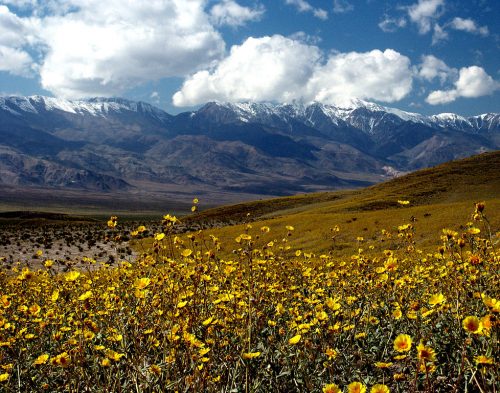
Spring is when most Witches celebrate the maiden goddess Persephone and her reunion with her mother Demeter. Persephone is the Queen of the Underworld and Demeter is the Goddess of Grain.
According to the standard version of the myth, the child-goddess Persephone is picking flowers with her nymph friends when the god Hades emerges from his underworld kingdom and abducts the maiden, forcing her to become his wife. The distraught mother Demeter retreats into her sorrow, refusing to tend her plants. The earth dries up.
Alarmed at the dying vegetation, the remaining gods unite to pressure Hades to relinquish the maiden goddess. Hades relents and agrees to release Persephone, provided she has eaten nothing while in the land of the dead. Of course this is trickery, because Persephone has eaten one pomegranate seed. A compromise is reached, whereby Persephone spends one-third of the year in the underworld and two-thirds of the year above ground.
While this myth explains the fertile and fallow periods of the agricultural calendar quite well, there are parts of the story that don’t fit. How is the Goddess of Death able to spend most of her time in the land of living? Gods and goddesses go back and forth between these worlds all the time, but welcoming the spirits of the dead isn’t a job you can just pack up and leave, except maybe for a long weekend. If Persephone is integral to the world below, and the poets insist that she is, then surely she can’t live in Greece two-thirds of the year. She would be considered a full-time resident for tax purposes (and husband Hades has a ton of assets).
Many scholars resolve this confusion with the conjecture that Persephone has been syncretized with another goddess, who is Demeter’s daughter in the myth. Since Persephone is often addressed in Classical texts by the title Kore, which means “Maiden,” this inferred goddess is called Kore. Separating Persephone into two personas goes a long way to clearing up the confusion.
But there is another problem. Persephone’s cult, the Eleusinian Mysteries, welcomed her back to the land of the living at the Autumn Equinox, rather than in the spring. In a lot of ways this makes sense, since the spring wildflower season in the Aegean is succeeded by hot dry months inhospitable to agriculture. Recall that Kore-Persephone is picking wildflowers when she is abducted. At the same time, Classical texts often place Kore’s return as the spring. This is most commonly considered the season of the world reborn. Perhaps the timing of the myth has been modified to apply to other localities or later agricultural practices.
When does Kore-Persephone leave and when does she return? It probably depends not only on hemisphere, but climate. In low-desert places in the northern hemisphere, most agricultural activity ceases as summer approaches. Or perhaps it depends on whether you live by an agricultural calendar at all. If you follow an academic calendar, summer is a time of rest and productivity reboots in the autumn. Spring is when most Witches celebrate the maiden goddess Persephone and her reunion with her mother Demeter.
Sources:
Robert Graves, The Greek Myths, Compete Edition, London: Penguin Books, 1960.
Homeric Hymn to Demeter, Gregory Nagy, trans. Center for Hellenic Studies at Harvard University.
Patricia Monaghan, The Book of Goddesses and Heroines. St. Paul, MN: Llewellyn Books, 1990.
Persephone. Theoi.com.

